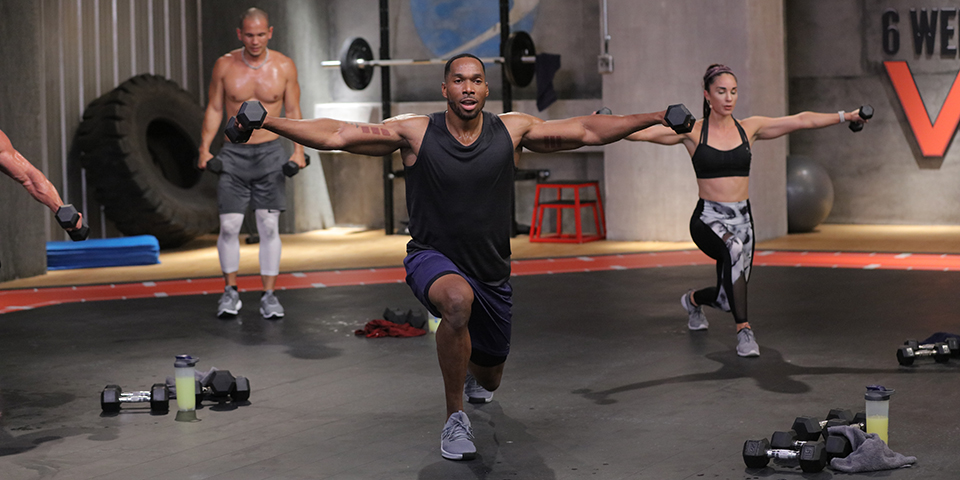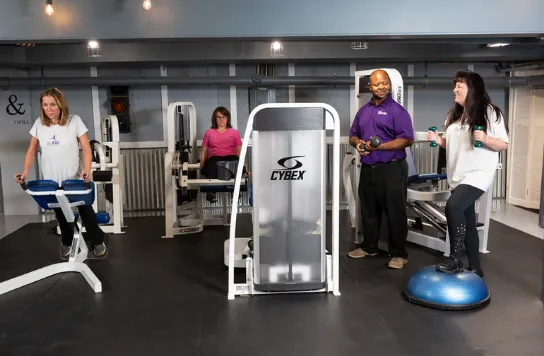Creating a Balanced Fitness Routine: Combining Cardio, Strength, and Flexibility, A well-rounded fitness routine is crucial for overall health and well-being. By combining cardio, strength training, and flexibility exercises, you can improve cardiovascular health, build muscle, enhance flexibility, and reduce the risk of injury. This guide will help you create a balanced fitness routine that incorporates all three components for optimal results.

1. Understanding the Components of a Balanced Fitness Routine
Cardio: Cardiovascular exercises increase your heart rate and improve heart and lung health. They are essential for burning calories, losing weight, and boosting endurance.
Strength Training: Strength exercises build and maintain muscle mass, improve metabolism, and support bone health. They also enhance functional strength, making daily activities easier.
Flexibility: Flexibility exercises improve the range of motion of your muscles and joints. They help prevent injuries, reduce muscle stiffness, and enhance overall mobility.
2. Designing Your Fitness Routine
Step 1: Assess Your Fitness Level and Goals
Before starting a new fitness routine, it’s important to assess your current fitness level and define your goals. Consider the following questions:
- What is your current level of physical activity?
- Are you looking to lose weight, build muscle, improve endurance, or enhance flexibility?
- Do you have any health conditions or physical limitations that should be taken into account?
Your answers will help tailor your routine to meet your specific needs and objectives.
Step 2: Plan Your Weekly Schedule
A balanced fitness routine typically includes a mix of cardio, strength training, and flexibility exercises spread throughout the week. Here’s a sample weekly schedule:
- Monday: Cardio (e.g., running, cycling) + Stretching
- Tuesday: Strength Training (e.g., weight lifting, bodyweight exercises)
- Wednesday: Flexibility (e.g., yoga, dynamic stretching)
- Thursday: Cardio (e.g., swimming, brisk walking) + Stretching
- Friday: Strength Training (e.g., resistance bands, kettlebell exercises)
- Saturday: Cardio or Active Recovery (e.g., hiking, light jogging)
- Sunday: Rest or Light Activity (e.g., gentle yoga, walking)
Step 3: Incorporate Variety
Variety in your workouts prevents boredom and promotes balanced fitness. Change up your exercises every few weeks to keep things interesting and ensure you’re working different muscle groups. For example:
- Alternate between different types of cardio, such as running, swimming, and cycling.
- Vary your strength training exercises by using different equipment, such as dumbbells, resistance bands, and bodyweight movements.
- Explore various flexibility practices like yoga, Pilates, and static stretching
3. Tips for Cardio Workouts
Why It Matters: Cardio workouts improve cardiovascular health, increase endurance, and burn calories.
How to Do It:
- Start Slow: If you’re new to cardio, begin with low-intensity activities like walking or light jogging. Gradually increase the intensity and duration as your fitness improves.
- Interval Training: Incorporate high-intensity interval training (HIIT) for efficient calorie burning and improved cardiovascular fitness. Alternate between short bursts of intense exercise and periods of rest.
- Mix It Up: Combine different cardio activities to work various muscle groups and prevent monotony. For example, you can run on Monday, swim on Wednesday, and bike on Friday.
4. Tips for Strength Training
Why It Matters: Strength training builds muscle, increases metabolism, and supports overall physical strength and bone health.
How to Do It:
- Focus on Form: Proper form is crucial to prevent injuries and maximize benefits. Consider working with a personal trainer to learn correct techniques.
- Compound Movements: Include compound exercises like squats, deadlifts, bench presses, and rows that work multiple muscle groups simultaneously.
- Progressive Overload: Gradually increase the weight or resistance as you get stronger. Aim to challenge your muscles with each session to promote growth and strength.
5. Tips for Flexibility Exercises
Why It Matters: Flexibility exercises enhance your range of motion, reduce muscle stiffness, and prevent injuries.Why It Matters: Flexibility exercises enhance your range of motion, reduce muscle stiffness, and prevent injuries.
How to Do It:
- Dynamic Stretching: Perform dynamic stretches as part of your warm-up to prepare your muscles for exercise. Examples include leg swings, arm circles, and torso twists.
- Static Stretching: Incorporate static stretches at the end of your workout to cool down and improve flexibility. Hold each stretch for 15-30 seconds without bouncing.
- Yoga and Pilates: Participate in yoga or Pilates classes to improve flexibility, balance, and core strength. These practices also help with relaxation and stress reduction.
6. Listen to Your Body and Rest
Why It Matters: Rest and recovery are essential for muscle repair, preventing burnout, and promoting long-term fitness gains.
How to Do It:
- Schedule Rest Days: Include at least one or two rest days per week to allow your body to recover. Use these days for light activities like walking or gentle stretching.
- Pay Attention to Your Body: Listen to your body’s signals. If you experience pain, fatigue, or discomfort, take a break or modify your workout.
Conclusion
Creating a balanced fitness routine that combines cardio, strength training, and flexibility exercises is essential for overall health and well-being. By assessing your fitness level and goals, planning a varied weekly schedule, and following best practices for each type of exercise, you can build a comprehensive workout plan that keeps you motivated and helps you achieve your fitness objectives. Remember to listen to your body, incorporate rest days, and enjoy the journey to a healthier, fitter you. Creating a Balanced Fitness Routine: Combining Cardio, Strength, and Flexibility






